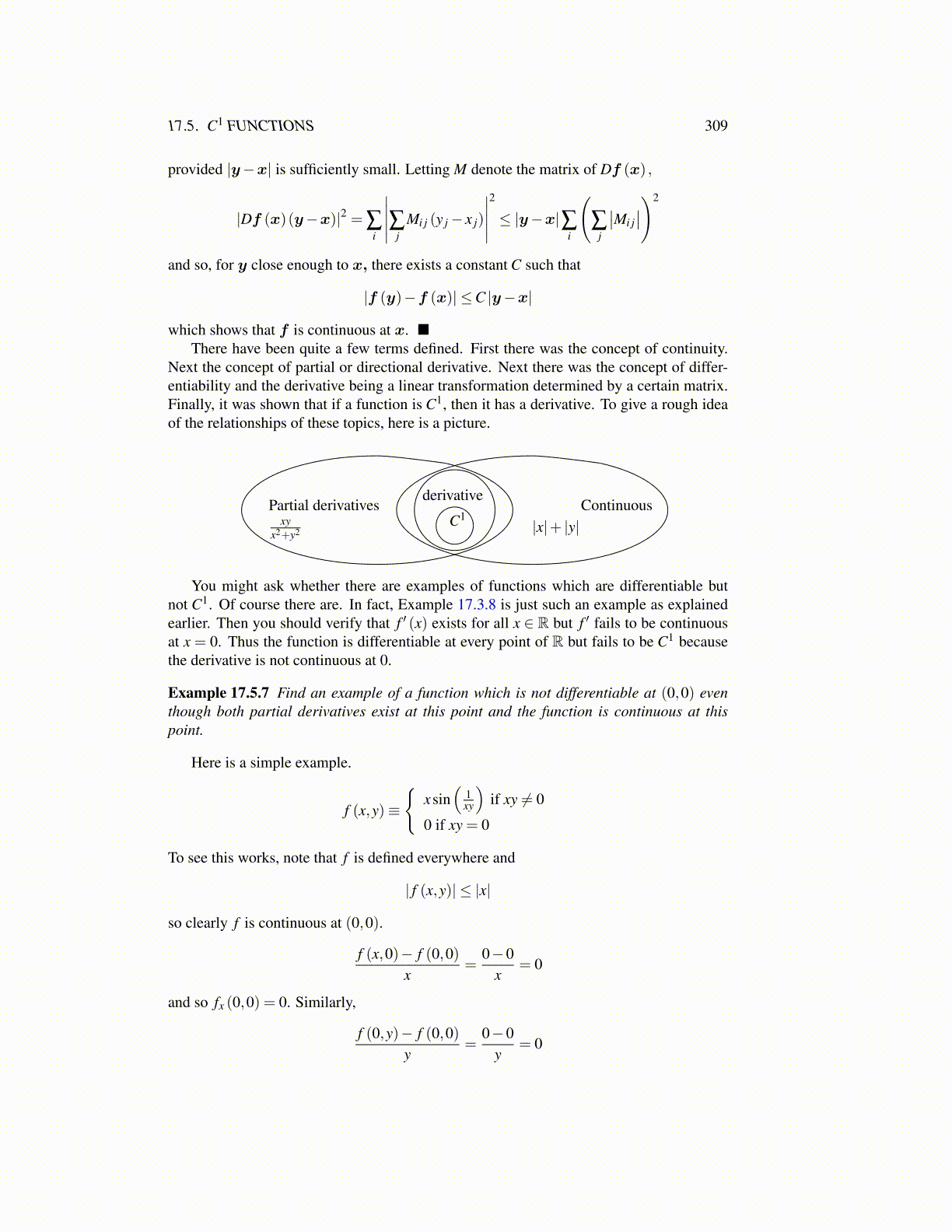
17.5. C1 FUNCTIONS 309
provided |y−x| is sufficiently small. Letting M denote the matrix of Df (x) ,
|Df (x)(y−x)|2 = ∑i
∣∣∣∣∣∑jMi j (y j− x j)
∣∣∣∣∣2
≤ |y−x|∑i
(∑
j
∣∣Mi j∣∣)2
and so, for y close enough to x, there exists a constant C such that
|f (y)−f (x)| ≤C |y−x|
which shows that f is continuous at x. ■There have been quite a few terms defined. First there was the concept of continuity.
Next the concept of partial or directional derivative. Next there was the concept of differ-entiability and the derivative being a linear transformation determined by a certain matrix.Finally, it was shown that if a function is C1, then it has a derivative. To give a rough ideaof the relationships of these topics, here is a picture.
Continuous|x|+ |y|
Partial derivativesxy
x2+y2
derivative
C1
You might ask whether there are examples of functions which are differentiable butnot C1. Of course there are. In fact, Example 17.3.8 is just such an example as explainedearlier. Then you should verify that f ′ (x) exists for all x ∈ R but f ′ fails to be continuousat x = 0. Thus the function is differentiable at every point of R but fails to be C1 becausethe derivative is not continuous at 0.
Example 17.5.7 Find an example of a function which is not differentiable at (0,0) eventhough both partial derivatives exist at this point and the function is continuous at thispoint.
Here is a simple example.
f (x,y)≡
{xsin
(1xy
)if xy ̸= 0
0 if xy = 0
To see this works, note that f is defined everywhere and
| f (x,y)| ≤ |x|
so clearly f is continuous at (0,0).
f (x,0)− f (0,0)x
=0−0
x= 0
and so fx (0,0) = 0. Similarly,
f (0,y)− f (0,0)y
=0−0
y= 0